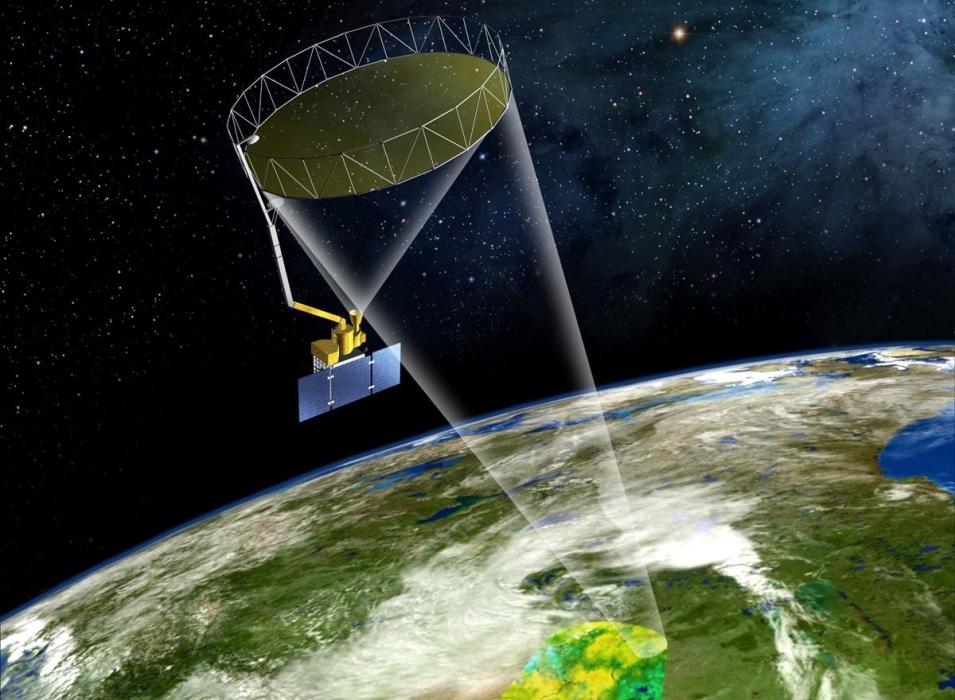As NASA’s newest satellite made its first orbit on January 31, NASA's Alaska Satellite Facility Distributed Active Archive Center (ASF DAAC) was ready to track it, receive data from it, and send commands to it.
Ground-station support is one of two critical roles ASF DAAC is playing in the new Soil Moisture Active Passive (SMAP) mission. Active and passive refer to the mission’s SAR and radiometer. ASF DAAC's second role, which will start in July, is distributing SMAP data to scientists - a role that is explained in detail on the ASF DAAC website. ASF DAAC is supporting SMAP with the newest of its three antennas, an 11-meter antenna operated by the facility on behalf of NASA, installed in 2013 on the University of Alaska Fairbanks campus.
SMAP will collect data on the entire planet’s soil moisture every three days for three years. From mud, to permafrost, to drought-stricken cropland, the Earth’s soil holds vital information about the planet’s water. Understanding where water is stored, where it is going, and how fast it is moving is critical as the human population grows, demand for water increases, the climate changes, and weather patterns shift.
ASF DAAC is one of two NASA DAACs that will distribute SMAP data to scientists. The other is the National Snow and Ice Data Center Distributed Active Archive Center (NSIDC DAAC). Four ground stations will downlink SMAP data. The others are in Antarctica, Argentina, and Norway.
SMAP launched from Vandenberg Air Force Base in California at 5:22 a.m. Alaska Standard Time on Saturday, Jan. 31.
